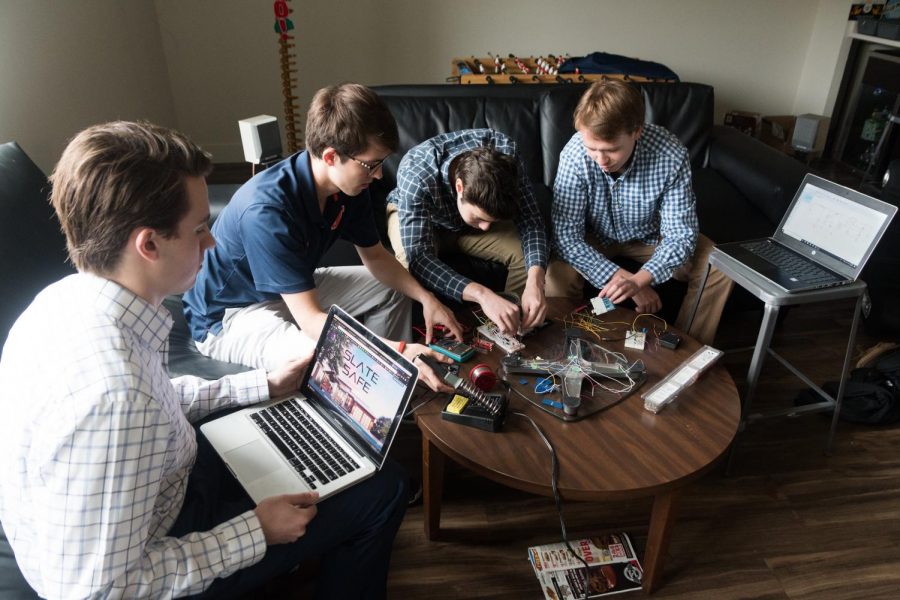Engineering students develop device to combat package theft
Apr 9, 2018
A team of Engineering students have developed a cheap, lightweight and portable device, Slate Safe, that could combat package theft problems.
According to a survey done by Xfinity Home, package theft hits nearly one-third of Americans.
Slate Safe is a one by one foot pad for placing packages. It incorporates a weight-based and alarm-based detection system, which triggers an alarm if someone steals packages from the pad.
John Simonaitis, senior in Engineering and project leader, said Slate Safe is a package deterrence system that works like a locked bike.
“The idea is that bike locks only work because a potential thief sees two bikes near each other, one of them is locked up and the other one is completely free. The bike that is completely free is much easier to take than the bike that’s slightly protected,” Simonaitis said.
Get The Daily Illini in your inbox!
Package theft is a very quick crime, but by adding a protection system thieves may hesitate from action, he said.
“They just see a package on an unprotected porch and no one else is around, and they’re just like ‘oh well I’m gonna grab that package.’ And by just adding this little barrier of protection drawing attention to them, we think that we could really deter thieves,” Simonaitis said.
The team is also working on a deluxe version of Slate Safe that adds some additional features to the core system, including a motion sensor and a camera.
John Graft, senior in Engineering, said the deluxe version includes a passive infrared motion sensor that detects movement within a certain radius of the device.
If movements are detected, then it sends signals to the camera, which takes a picture of the person, and the picture would quickly be sent to the user’s phone through an app.
The basic version without the camera feature would cost approximately $30, and the deluxe version would cost about $100.
“The balance is that we can provide better protections to these packages easily, but are people going to be willing to pay for that? Are they willing to spend $100 that robust or would they rather spend $20 to get that little peace of mind and protect from those smaller thieves,” Simonaitis said.
Figuring out regulation in privacy of whether it constitutes as surveillance is another important aspect. Zipeng Wang, graduate student in aerospace and teaching assistant for the project, said there are some privacy concerns with the camera feature. People do not like their pictures being taken without notice.
“As an engineer, a lot of time you focus on the engineering aspect and you forget a lot of other aspects like regulation passing,” Wang said. “You can have a perfect working product but your product can be stopped at a regulation site.”
At this stage, the team is assembling a working prototype for the kickstarter campaign to see if people other than themselves would have strong interests and would be willing to invest in this product.






